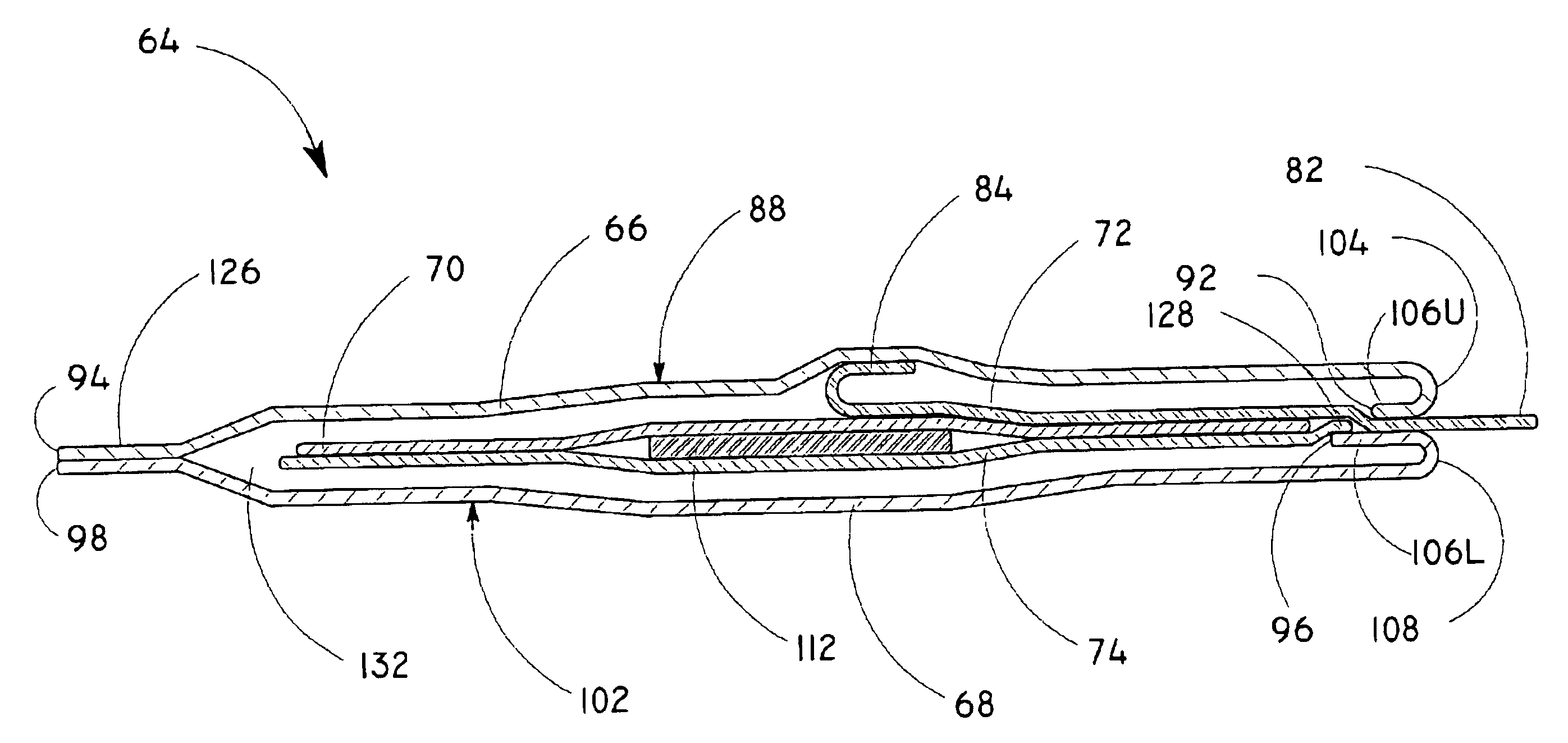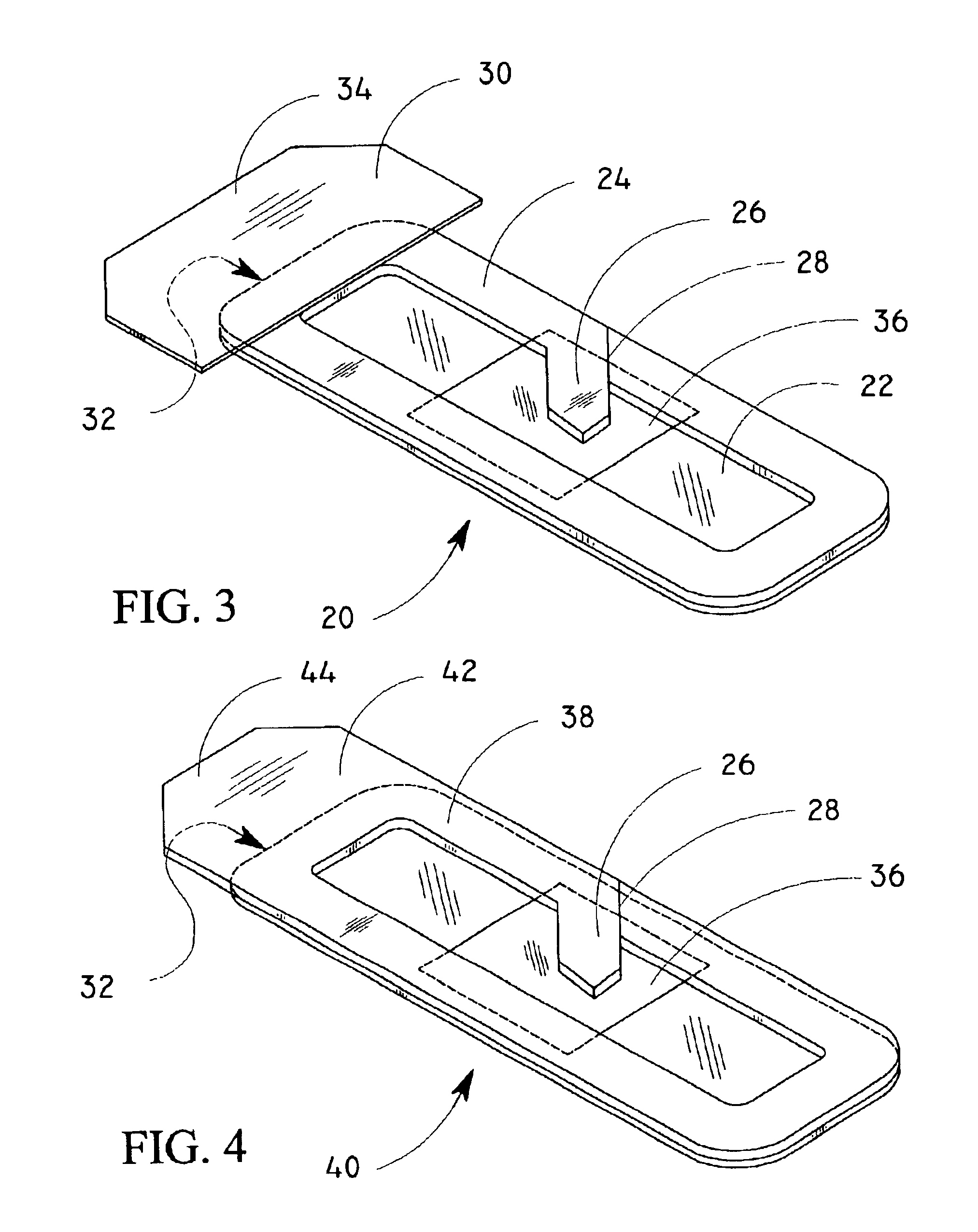Bandage package and dispenser
a dispenser and bandage technology, applied in the field of packaging and dispensing systems, can solve the problems of loss of sterility, increased likelihood, and exacerbated disadvantages, and achieve the effects of facilitating precise and convenient one-handed application of bandage to wounds, enhancing user's grip on the bandage during application, and facilitating the application process
- Summary
- Abstract
- Description
- Claims
- Application Information
AI Technical Summary
Benefits of technology
Problems solved by technology
Method used
Image
Examples
first embodiment
[0182]A perspective view illustration of a dispensing pack is shown in FIG. 25. A plurality of packages 374 are aligned along their longitudinal axis in the same or substantially the same plane (which may include a curved plane). A means for holding individual packages functions to hold the packages in close proximity to one another. A suitable means for holding individual packages in alignment comprises a continuous upper sheet 376 and / or lower sheet 378 long enough such that multiple packages can be mounted thereto. A rigidity-enhancing means is associated with either the lower sheet or the upper sheet. In an alternative embodiment, either the lower sheet or the upper sheet is constructed from a substantially rigid material. A means for holding the dispensing pack 372 is used to hold the dispensing pack in position for dispensing the adhesive strips. If a suitable means for holding the dispensing pack is employed, then the second tab may be omitted.
second embodiment
[0183]A perspective view illustration of a dispensing pack is shown in FIG. 26. The dispensing pack 382 comprises a continuous roll sheet of material upon which a plurality of packages 384 are aligned and attached along their lateral axis. The first tab 388 extends such that the user can easily grasp it. The lower sheet 386 is formed integrally from the continuous roll sheet material. The continuous roll dispensing pack can be placed within a dispenser adapted to support and contain the continuous roll dispensing pack.
[0184]A perspective view illustration of a dispenser suitable for use with the continuous roll dispensing pack (as illustrated in FIGS. 26 and 28) is shown in FIG. 27. The continuous roll dispensing pack 382 is placed within a dispenser 394 such that individual adhesive strips may be dispensed. The packages are torn off after use. The manufacture of dispensers are well known in the art.
[0185]A perspective view illustration of the dispensing pack of FIG. 26 using a cont...
third embodiment
[0189]A perspective view illustration of a dispensing pack is shown in FIG. 31. The dispensing pack 398 is formed from a plurality of substantially superimposed packages 400, which are attached to or aligned with one another. The individual packages 400 are formed from one or more sheets of material either attached to each other, held adjacent to each other or folded in an accordion-like fashion so as to form a plurality of individual packages. In one embodiment, the dispensing pack is constructed from a single sheet of material folded in an accordion-like fashion, so as to form both the upper sheet 402 and the lower sheet 404 of the package. In another embodiment, the dispensing pack is formed from a single sheet of material that forms the lower sheet. The upper sheet is formed from individual sheets that are attached to the continuous sheet so as to form the package. In another embodiment, the dispensing pack is formed from two continuous sheets of material that are folded in an a...
PUM
 Login to View More
Login to View More Abstract
Description
Claims
Application Information
 Login to View More
Login to View More - R&D
- Intellectual Property
- Life Sciences
- Materials
- Tech Scout
- Unparalleled Data Quality
- Higher Quality Content
- 60% Fewer Hallucinations
Browse by: Latest US Patents, China's latest patents, Technical Efficacy Thesaurus, Application Domain, Technology Topic, Popular Technical Reports.
© 2025 PatSnap. All rights reserved.Legal|Privacy policy|Modern Slavery Act Transparency Statement|Sitemap|About US| Contact US: help@patsnap.com



